Curiosity: Notes from the field
Reflections as a workshop facilitator at the Leadership and Humanity Symposium
This past week, I attended a Leadership and Humanity Symposium in Hobart (Australia) where I also had the opportunity to facilitate several workshops on cultivating curiosity.
I’m going to cover this event in two parts. In this article, I’m going to share my reflections as a workshop facilitator, for those of you interested in more of the behind-the-scenes stuff. I wanted to do this whilst the experience was fresh in my mind.
In the next article, I’ll focus on the content of the Symposium, what was presented, what participants discussed, and what actions were identified.
Setting the scene
This is an annual Leadership Symposium hosted by Tasmanian Leaders, with the theme for this year being Humanity. In short, given the challenges we observe in the world, how might we lead with humanity?
There were ~100 people in attendance, approximately a dozen speakers, and in terms of structure, the bulk of the presentations happened in one day, with a working breakfast the following day to identify actions and next steps.
I’ve paraphrased the themes covered in the Symposium (full list of speakers here):
Keynote: Global and local trends, along with how we navigate disruptions
Workshop: The impact of psychological safety in the workplace
Workshop: Five mindsets for creating more human workplaces
Panel: What leaders can do to navigate complexity and create a better future
Keynote: What it means to be human in the 21st century
In terms of my part on cultivating curiosity, I had a particularly interesting brief. I was actually given 3 touchpoints with the attendees:
A 15-minute lightning round after the first keynote to prime people on curiosity
A 30-minute closing segment at the end of the day to get people to reflect on what they’ve learned and what they could take away as actions
Then, on the following day, I hosted a breakfast for the remaining attendees (~50%) and needed to guide them towards the identification of actions and commitments that people can take away
On setting design objectives and challenges
I won’t lie, this was a challenging event to design for and I probably spent a solid 2 to 3 days iterating the structure of the workshop, including multiple revisions on a script.
First, for anyone who’s not done this before, there’s an important difference between preparing for a keynote presentation vs a workshop. I like to think of keynotes like a theatre performance, where the goal is to take an audience through a journey of stories, research, and insights that expand their perspectives (think Ted Talk). That’s not to say there isn’t any audience interaction but information flow is more ‘one-way’.
A workshop is a bit more like structured improv with lots of audience participation, where the goal is for people to learn something new for themselves. There’s generally less talking from the facilitator but on the other hand, the challenge lies in how you design for consistent participation, given everyone will be in different headspaces. If the activity is too simple, people won’t learn anything meaningful. Too convoluted and you risk people completely disengaging.
Because of how my sessions were spread out, I made sure to start with a clear objective, followed by some solid design parameters. So with ‘Cultivating Curiosity’ as my topic, my two objectives were:
People have to feel innately more curious (not just be given a definition)
As a result of that feeling, be able to identify realistic actions they can take away from the Symposium
Working backwards from that, I then set myself the following design challenges:
I have 15 minutes in my first session. What’s the bare minimum information I can present to provoke people into reframing how they think about curiosity and engage them with a curiosity-related activity / tool?
How can I design this activity / tool in a way that people will find useful for the Symposium as a whole, and not just my session?
The above challenge was even more important because I had multiple touchpoints throughout the Symposium, therefore whatever I designed needed to be flexible enough to build on everything that came before it
And finally, I needed to fulfil my design objectives above so that people could get a taste of the effectiveness of the Curiosity Mindset
By setting myself these design objectives and principles at the outset, it helped keep me focused throughout preparation.
On keeping things simple
One of the more difficult tasks with my preparation was figuring out what I could leave out. As a facilitator, there is always a temptation to include more stuff, to show people the magic of what they could achieve with our ideas. But that’s a trap.
A good friend (hi Con!) shared this observation after attending one of my previous workshops (paraphrased):
“Remember that you’re already a ‘master’ of your content. The words you use, the ideas you have, you’ve been playing with them for years. For the rest of us, we’re new to it, we’re novices. It will take us time to ‘get’ you.”
I took this lesson to heart and made sure I focused on a single activity / tool and a single analogy throughout the Symposium… but boy was this hard! There is so much that I’ve left on the cutting room floor!
Still, this approach did pay off. People approached me later to express how much they enjoyed my sessions, in part because of how simple I was able to keep things whilst being profound enough to add value to their day.
On leverage
Another advantage of focusing on a single tool or analogy was that it pushed me to think about how I could leverage every activity over the course of the day.
For example, in collaboration with Tasmanian Leaders, a key activity we undertook was to ask people to identify a single, burning question they had at the start of the day and then to stick it up on this wall; like a Word Cloud but made up of questions.
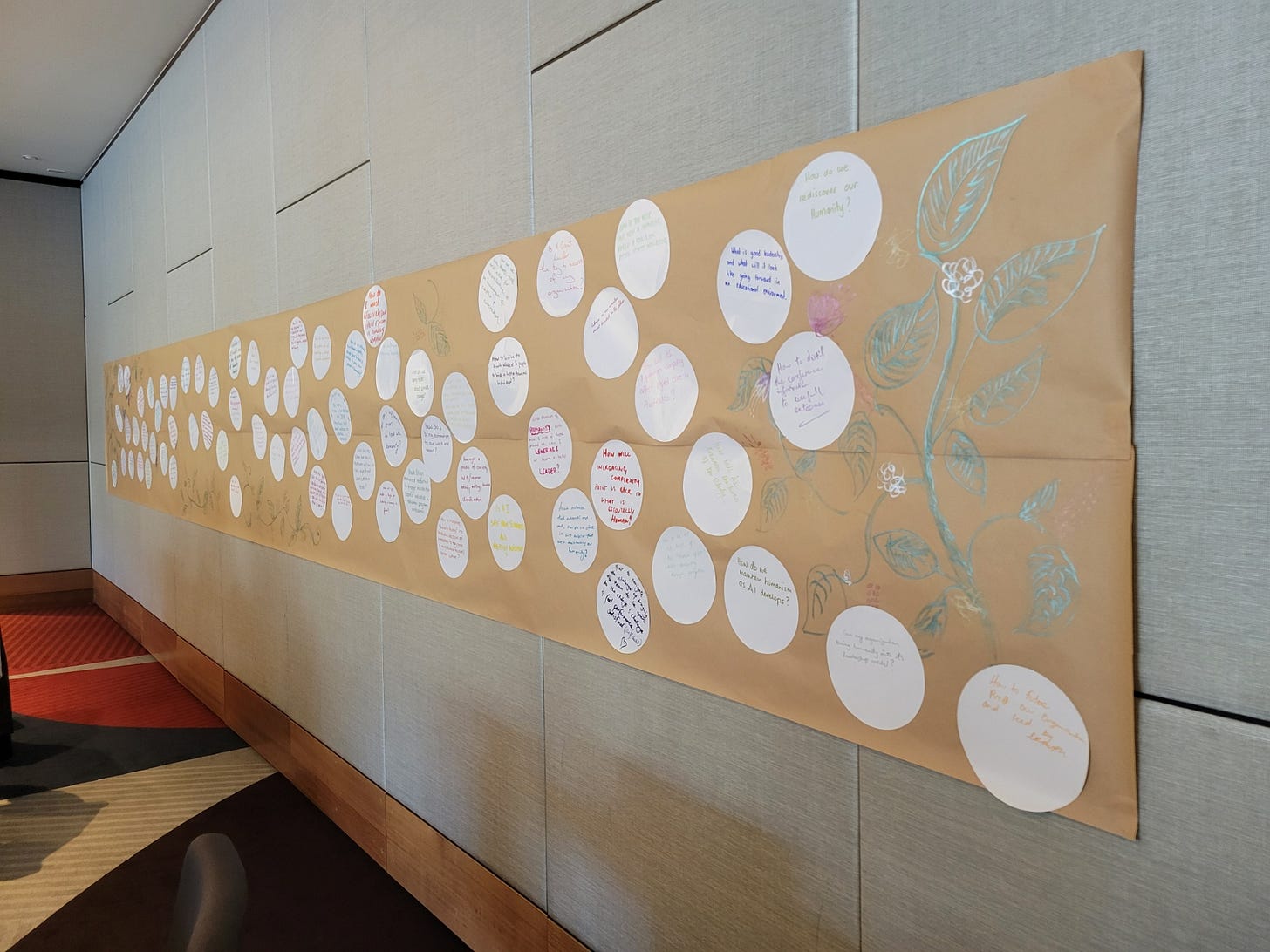
At the end of the day, I then asked people to reflect on the question they initially asked and then to consider what’s changed; what are they curious about next. Now, to be clear, this initial burning question is but one component of the tool I walked people through, but it really helped people recognise how far they changed throughout the Symposium.
I’ll share some of those changes in next week’s article, once I’ve had a chance to analyse it first.
On simplifying instructions
Despite what I said about keeping things simple, I do feel like I could’ve done more.
During the breakfast session I hosted on the second day, my role was to help people identify actions and experiments they could take away from the Symposium.
I started by giving people a series of startup-inspired creative activities. Then, over breakfast, I asked people to talk amongst their tables to identify short-term experiments they could run within the next 6 months, leveraging the Curiosity Tool they worked on from Day 1. Their responses were streamed live on screen, creating a sense of shared accountability.
Whilst the experiments were pretty good for the most part, one observation was that some of the submissions shared by participants weren’t really experiments; they were more ‘initiatives’ such as: “Creating safe spaces for radical candour.”
In other words, I was still falling into the ‘mastery’ trap I mentioned above, assuming everyone could identify a short-term experiment. In hindsight, I wish I had presented a simple template for people to populate, just so people had an example to use.
On having fun
And finally, I really leaned into having some fun with the audience. I made sure that every single slide I used featured cats. There were several reasons I did this, though I didn’t explicitly tell the audience why:
Given the topics were likely to be quite heavy, I thought it might be a welcome relief for people to see something cute and non-threatening on screen. This is a technique I’ve lifted from trauma-informed workshop facilitation strategies
‘Curiosity killed the cat’ is a very obvious branding opportunity
I wanted to create an easy association for the audience: Cats = Curiosity = Scott
I’m a massive cat person, and I figured that this could be a fun way for me to be relaxed, as well as make it easier for people to relate to me
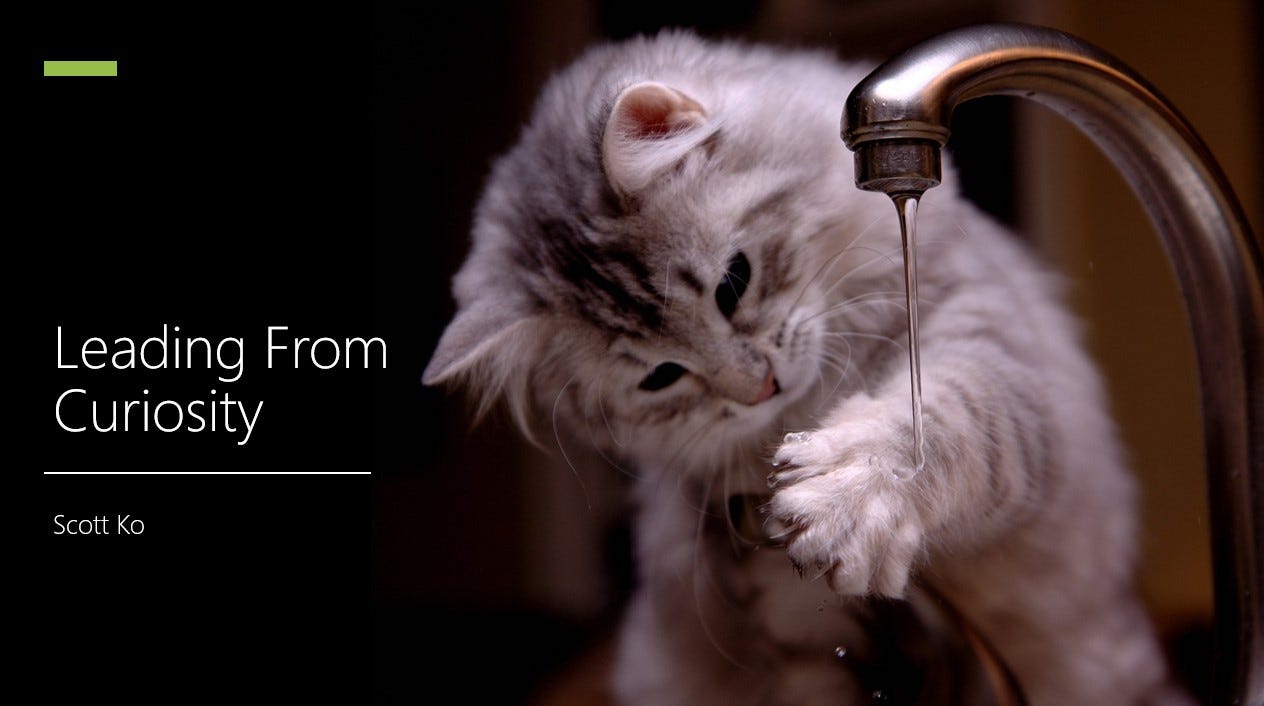
On achieving my intended objective
Personally, I feel like I achieved my key objective: For people to innately feel more curious. How do I know this?
Firstly, when participants had an opportunity to present the experiments and actions they were taking away, almost all of them started by reflecting on the initial burning question they stuck up on the Wonder Wall at the start of the Symposium, and then talking about how their curiosity had shifted.
Secondly, here’s what someone posted afterwards:
If you’ve made it this far, I hope you found this peek behind the curtains of workshop facilitation useful. If you’d like to see more content like this, please let me know.
Next week, I’ll follow up with insights and reflections from the Symposium itself, including themes shared by other speakers and facilitators, as well as some analysis of the questions and themes shared by participants.


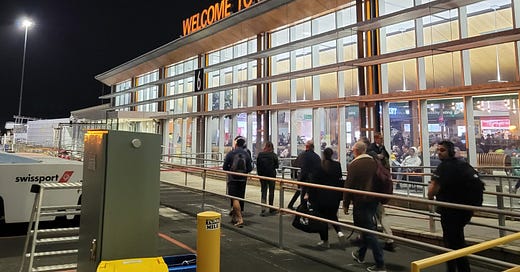



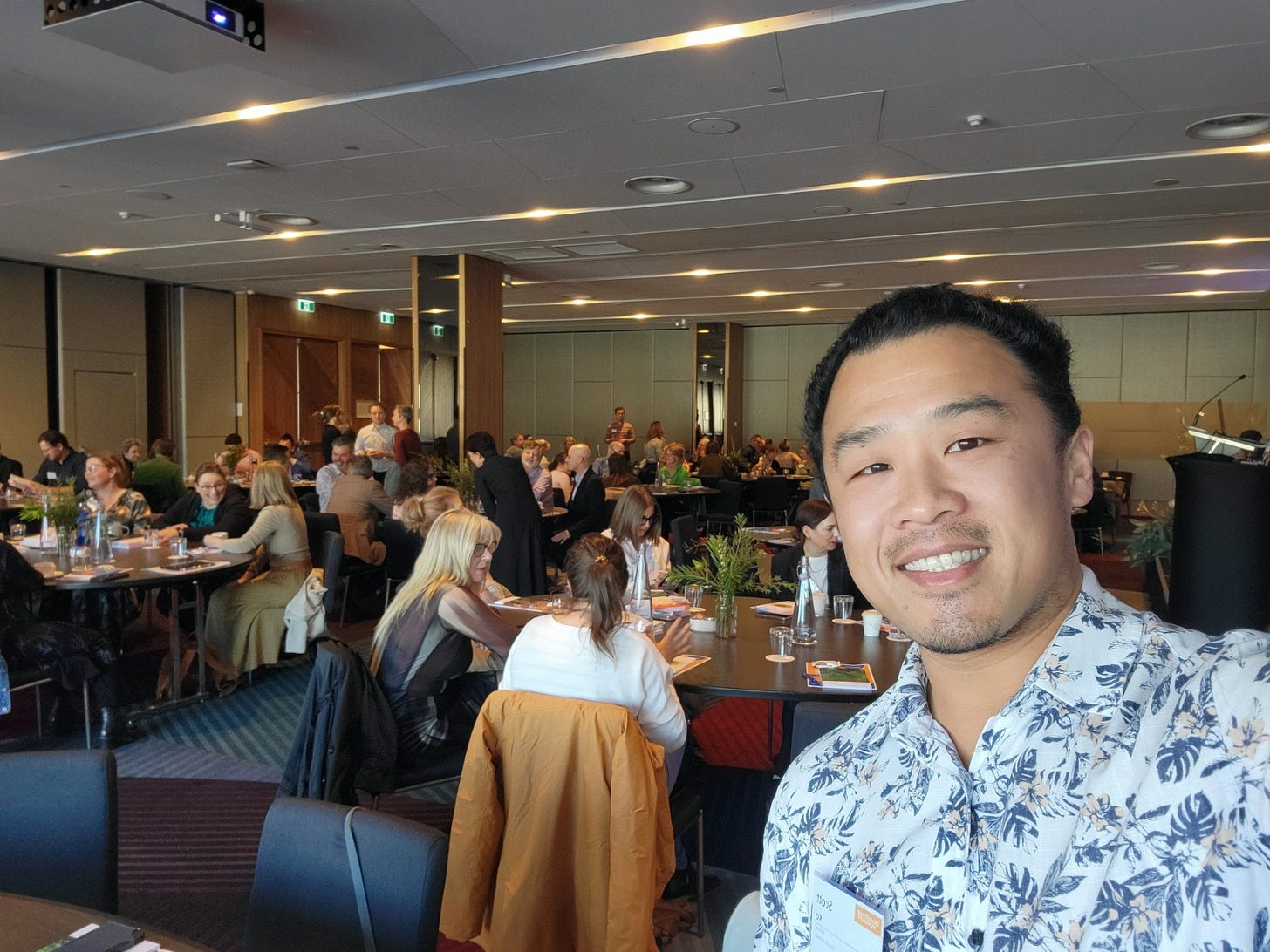
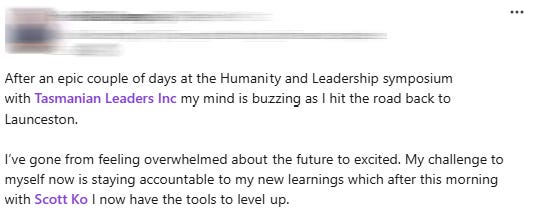

You're a master in turning curiosity into action. Your creativity and playfulness infuse humanity into leadership. Looking forward to part two and more insights into this transformative experience!
A curious question, do you have background in Design? : )
I love how you approached the whole thing Scott!
Who knew leadership workshops could involve so many felines lol?
What really struck me was your focus on simplicity. Trying to cram everything you know into a presentation is so tempting.
It's a great peek behind the curtain. Really makes me appreciate the art of facilitation.
Thank you for sharing.